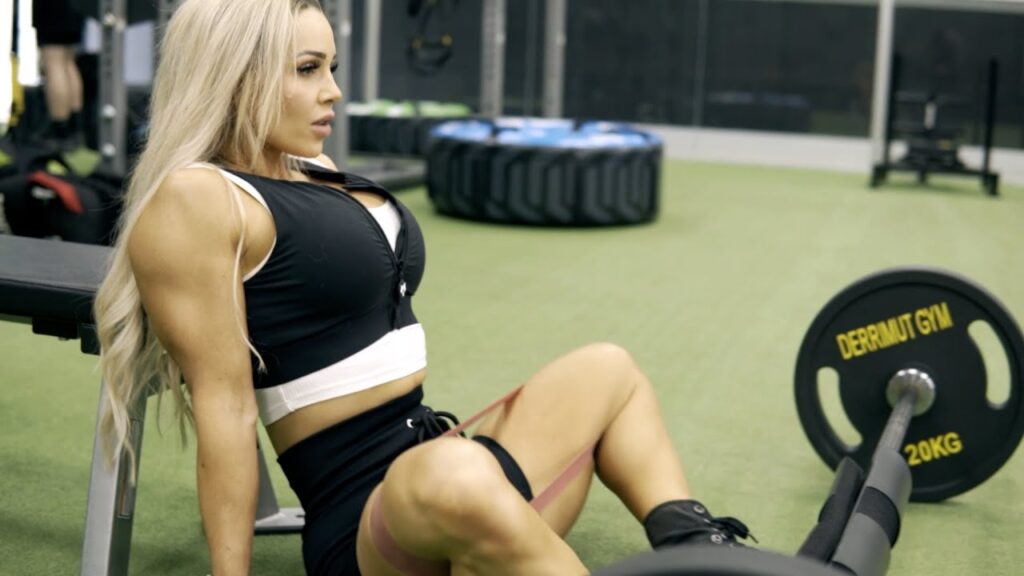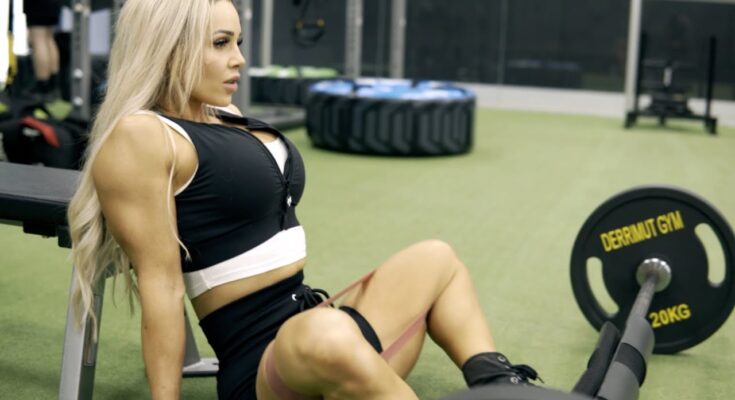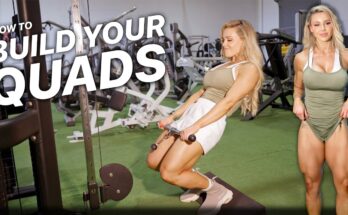1. Focus on Compound Movements
Compound exercises should be the foundation of any glute-building program. These movements engage multiple muscle groups and allow you to lift heavier weights, stimulating muscle growth more efficiently. The top compound exercises for glutes include:
- Squats: Back squats, front squats, and goblet squats all target the glutes, especially when you use a deeper range of motion.
- Deadlifts: Traditional, sumo, and Romanian deadlifts are excellent for hitting the glutes and hamstrings.
- Hip Thrusts: This exercise isolates the glutes while allowing for heavy loading and a strong contraction at the top.
- Lunges: Variations like walking lunges, Bulgarian split squats, and step-ups challenge each leg individually and emphasize the glutes when performed with proper form.
Aim to perform these movements with good technique and progressively overload them over time by increasing the weight, reps, or sets.
2. Mind-Muscle Connection Is Key
One often-overlooked strategy for glute growth is improving your mind-muscle connection. This means actively focusing on squeezing and engaging your glutes during each rep. Many people inadvertently let their quads or lower back take over during glute-targeting exercises, reducing the effectiveness of their workouts.
To enhance your mind-muscle connection:
- Warm up with glute activation drills such as glute bridges, clamshells, or banded lateral walks.
- Slow down the movement and emphasize the squeeze at the top.
- Visualize your glutes working as you perform each rep.
Practicing this will ensure that you’re actually using the muscle you’re trying to grow.

3. Train with Volume and Frequency
To build glute muscle, you need adequate volume (total work done) and frequency (how often you train). For most people, training glutes 2–3 times per week is optimal. This allows for enough stimulus while giving the muscles time to recover and grow.
A typical weekly glute training split might look like:
- Day 1: Glute-focused lower body day (heavy squats, deadlifts, lunges)
- Day 3: Glute isolation and accessory day (hip thrusts, kickbacks, band work)
- Day 5: Full lower body with glute emphasis (Bulgarian split squats, step-ups, Romanian deadlifts)
Make sure you’re including a mix of both heavy, low-rep sets and lighter, higher-rep sets to target all muscle fibers and promote hypertrophy.

4. Prioritize Progressive Overload
Progressive overload is the principle of continually challenging your muscles by increasing the demands placed on them. If you keep lifting the same weight for the same reps, your muscles have no reason to grow.
Ways to implement progressive overload:
- Increase weight lifted gradually over time.
- Add more sets or reps.
- Reduce rest time between sets.
- Improve your form and range of motion.
- Add tempo (e.g., slowing down the eccentric phase).
Track your workouts and make small, consistent increases each week to keep progressing.

5. Include Glute Isolation Exercises
While compound lifts are crucial, isolation exercises help fine-tune and specifically target the glutes. These moves are especially helpful for activating the glutes and creating that round, lifted appearance.
Great isolation exercises include:
- Glute kickbacks (machine or cable)
- Cable pull-throughs
- Banded hip abductions
- Single-leg glute bridges
- Fire hydrants
Use these exercises to finish your workouts or as part of your warm-up routine to “wake up” the glutes before bigger lifts.
6. Don’t Neglect Recovery
Muscle growth doesn’t happen during the workout—it happens after, when your body repairs and rebuilds muscle fibers stronger than before. That’s why recovery is just as important as training.
Tips for better recovery:
- Sleep: Aim for 7–9 hours of quality sleep each night to support muscle repair.
- Nutrition: Eat enough protein (0.7–1 gram per pound of bodyweight), healthy fats, and complex carbs to fuel your workouts and muscle growth.
- Rest Days: Incorporate at least 1–2 rest days per week to avoid overtraining.
- Mobility Work: Stretch and foam roll to improve circulation, reduce soreness, and prevent tightness in the hips and glutes.
Proper recovery enhances your training performance and helps you stay consistent over the long term.

7. Mix Up Your Angles and Equipment
Glute muscles have three main parts: gluteus maximus, gluteus medius, and gluteus minimus. To fully develop them, it’s important to train from different angles and use a variety of equipment. This helps you stimulate all parts of the glutes and prevents adaptation.
Try incorporating:
- Different foot stances in squats and deadlifts
- Forward-leaning variations (e.g., forward lean in Bulgarian split squats)
- Bands, dumbbells, barbells, kettlebells, and cables
- Machines like the Smith machine, cable machines, and glute kickback machines
Varying your approach every 4–6 weeks can reignite growth and keep things interesting.

8. Stay Consistent and Patient
Building glutes—like any muscle—takes time, consistency, and effort. It’s easy to get frustrated when results don’t come overnight, but the key is to stay committed. You’ll begin to notice small changes in strength, shape, and performance after a few weeks, but significant visual changes often take several months.
Track your progress with photos, measurements, and strength logs—not just the scale. Celebrate small wins and stay motivated by focusing on how much stronger and more capable you feel.
Final Thoughts
Glute training isn’t just about doing endless squats or kickbacks—it’s about a smart, well-rounded approach that combines compound movements, isolation work, progressive overload, and proper recovery. By implementing these tips consistently, you’ll not only sculpt strong, powerful glutes but also improve your overall athletic performance, posture, and physical health.
Remember: results come from what you do most of the time, not some of the time. So lace up your gym shoes, fuel your body well, train smart, and trust the process.



